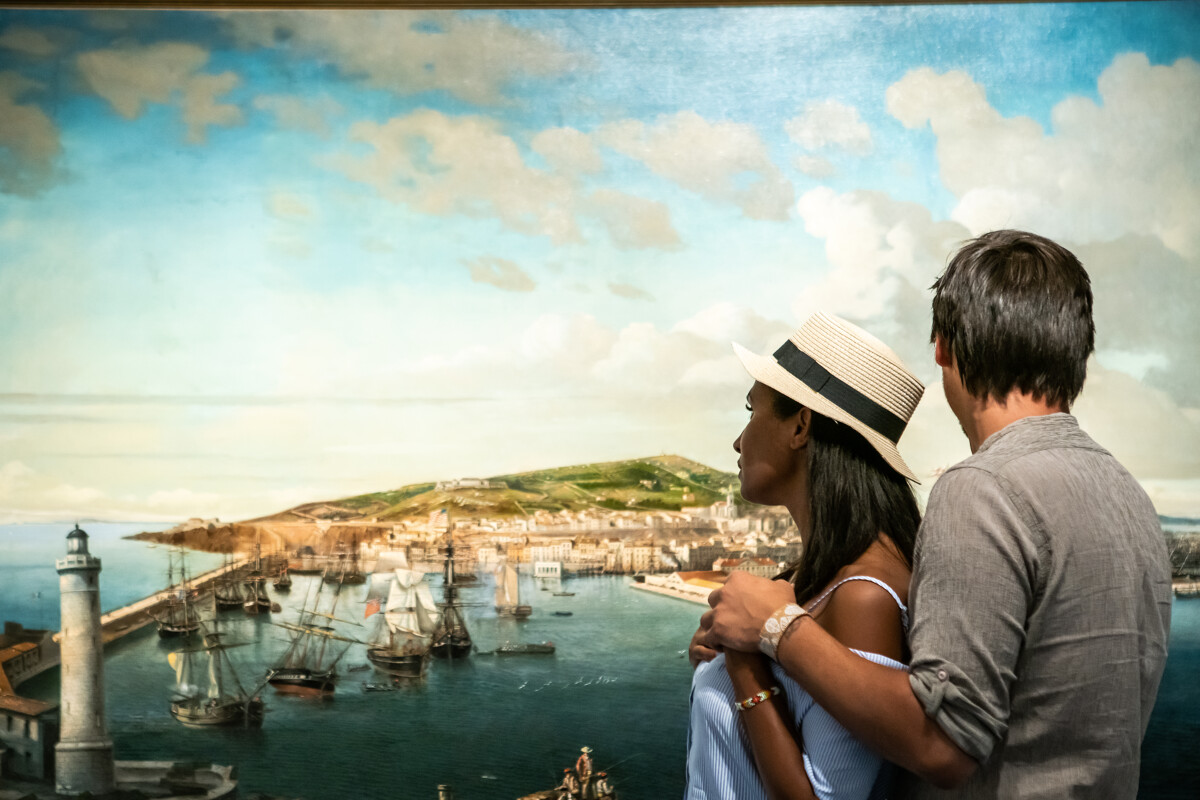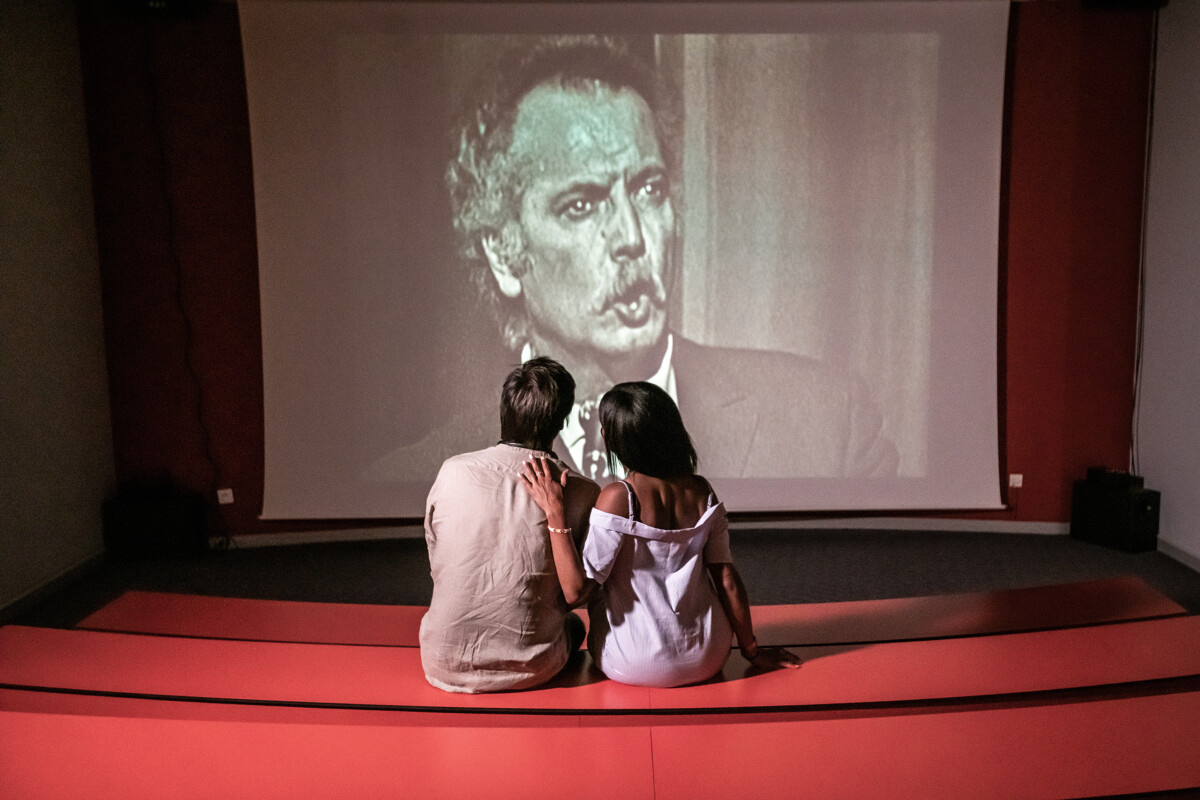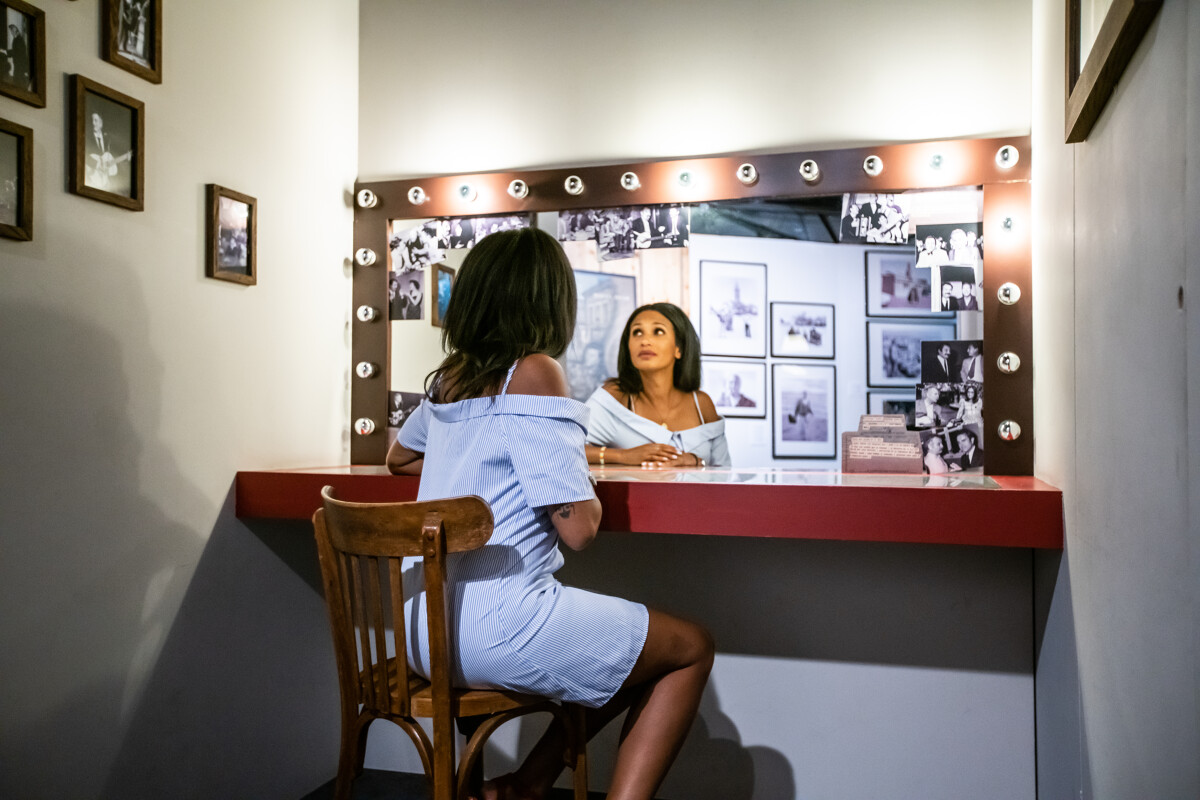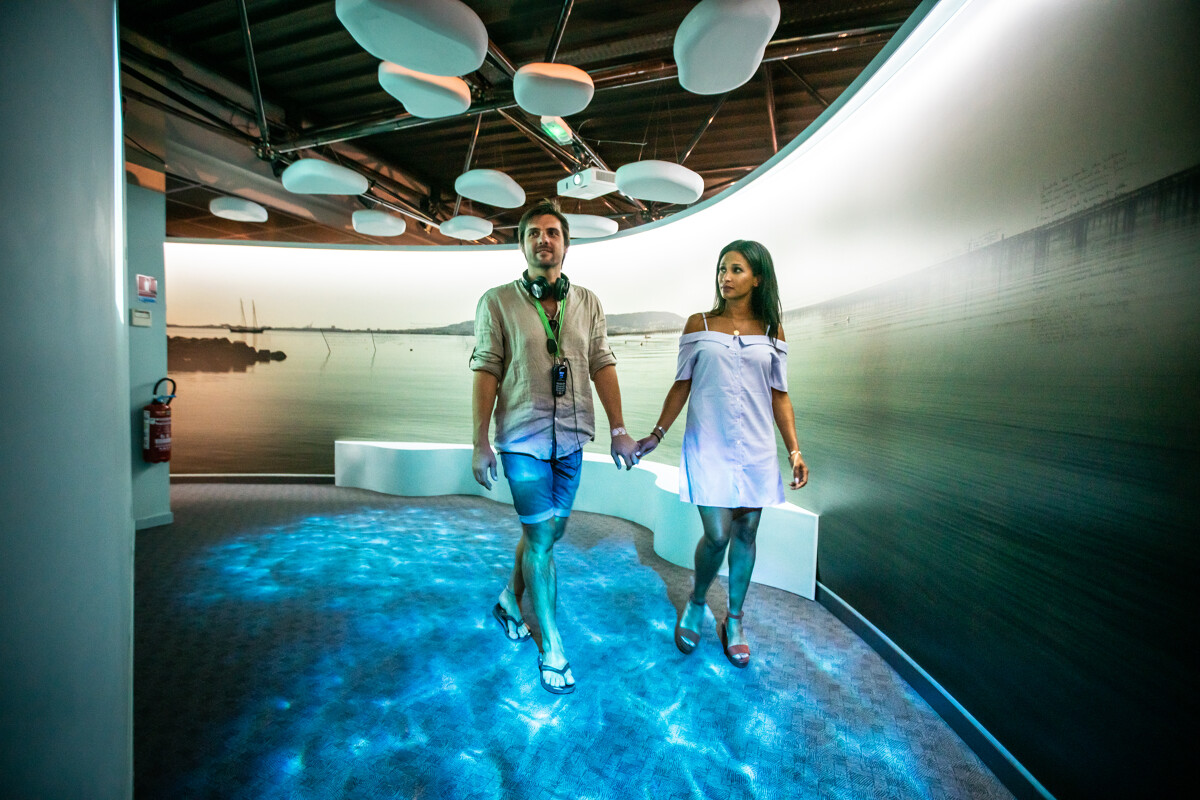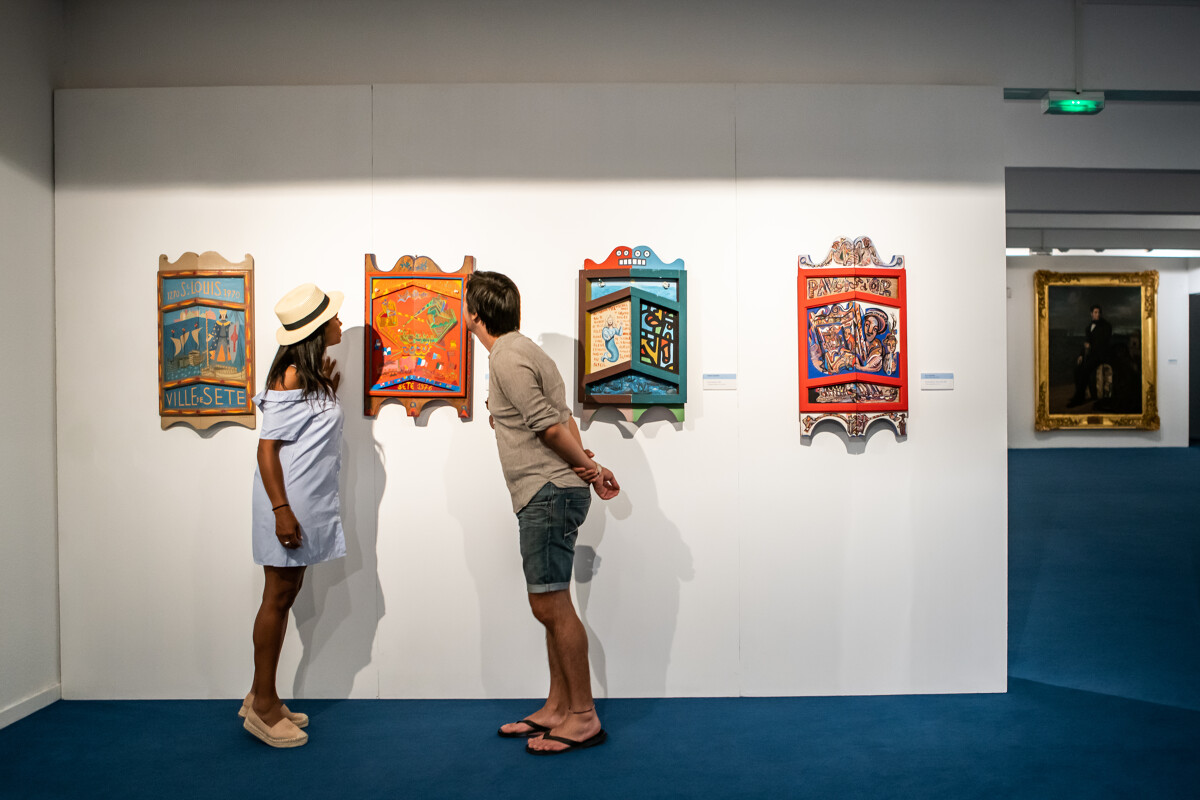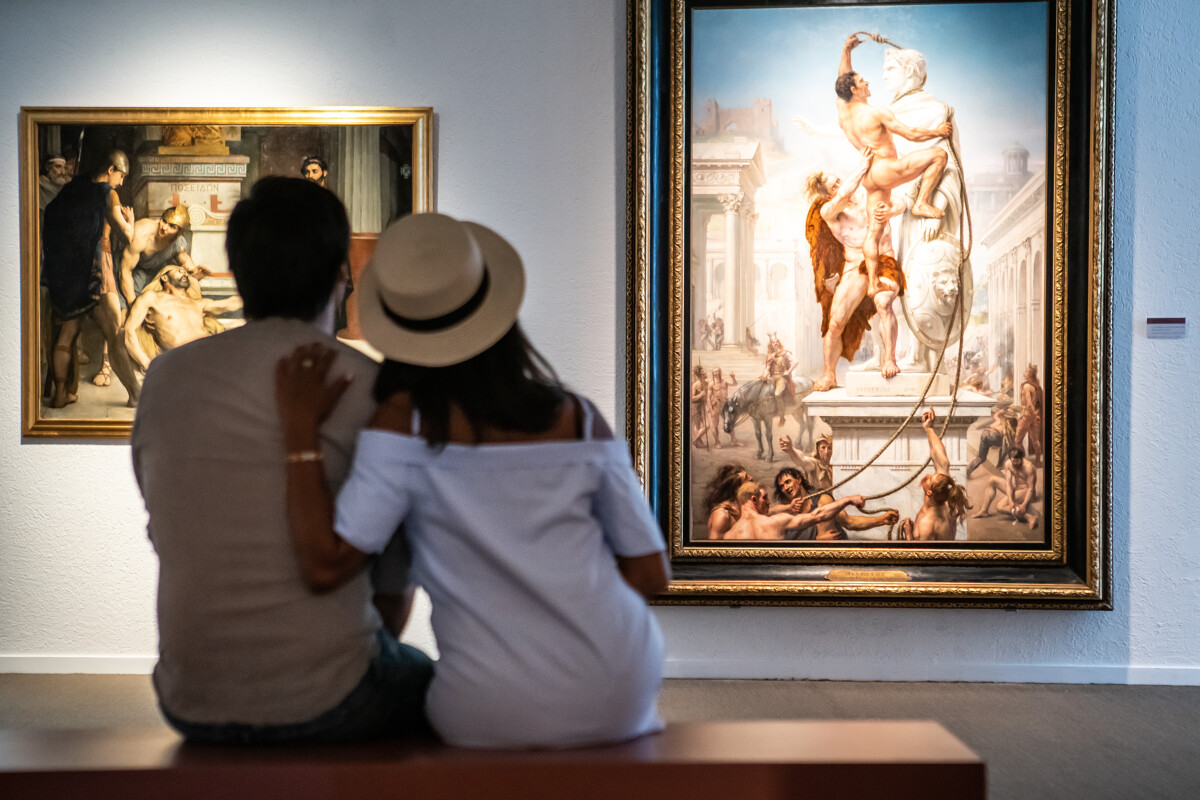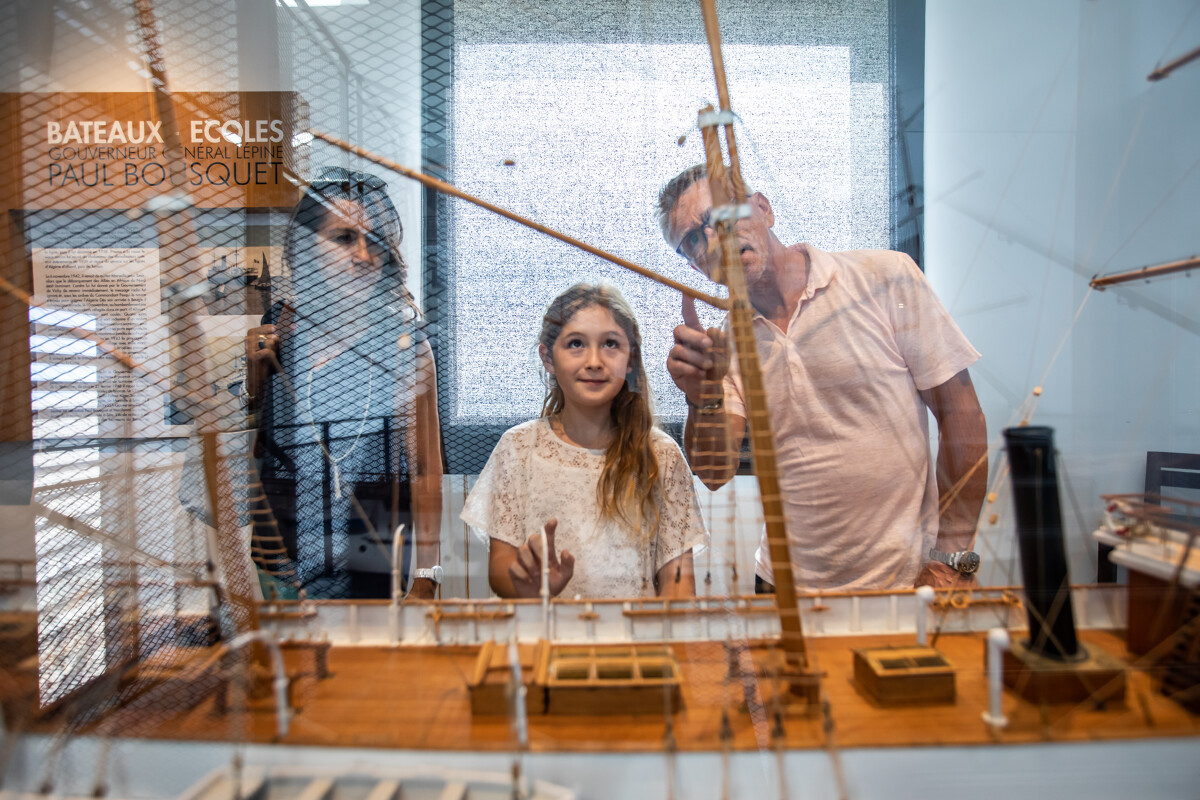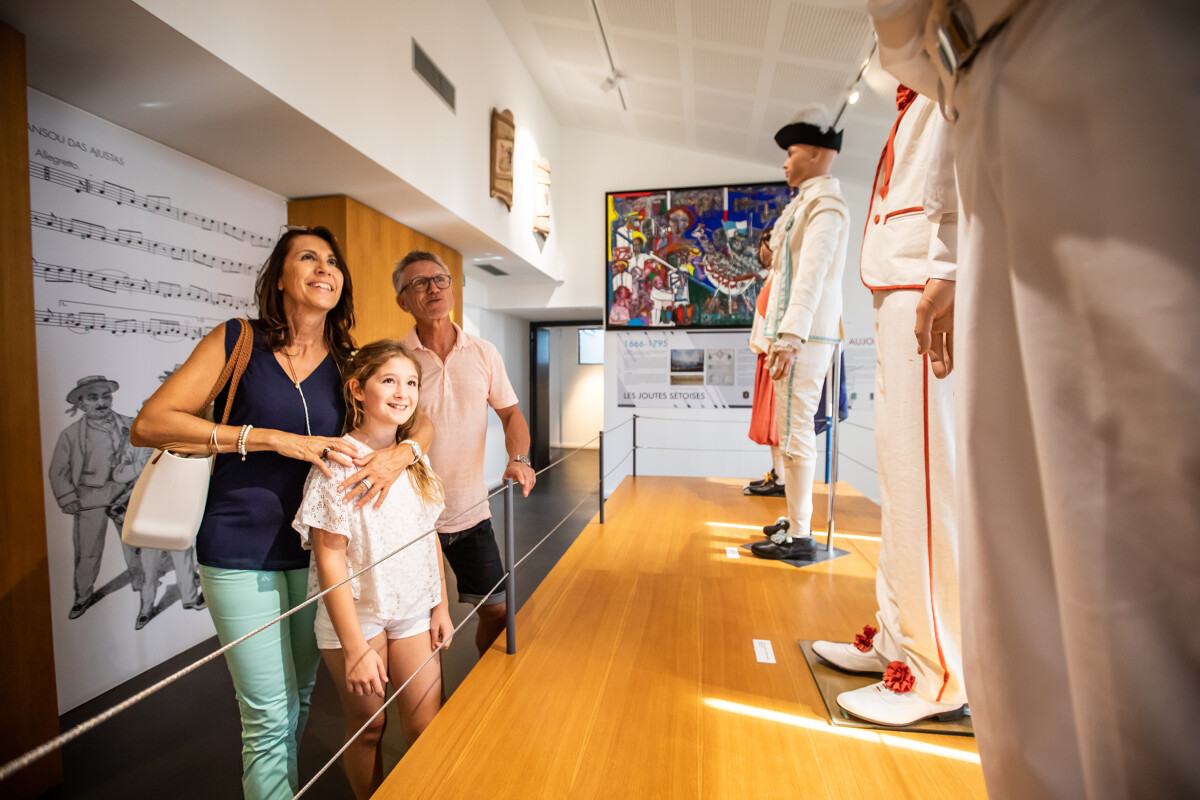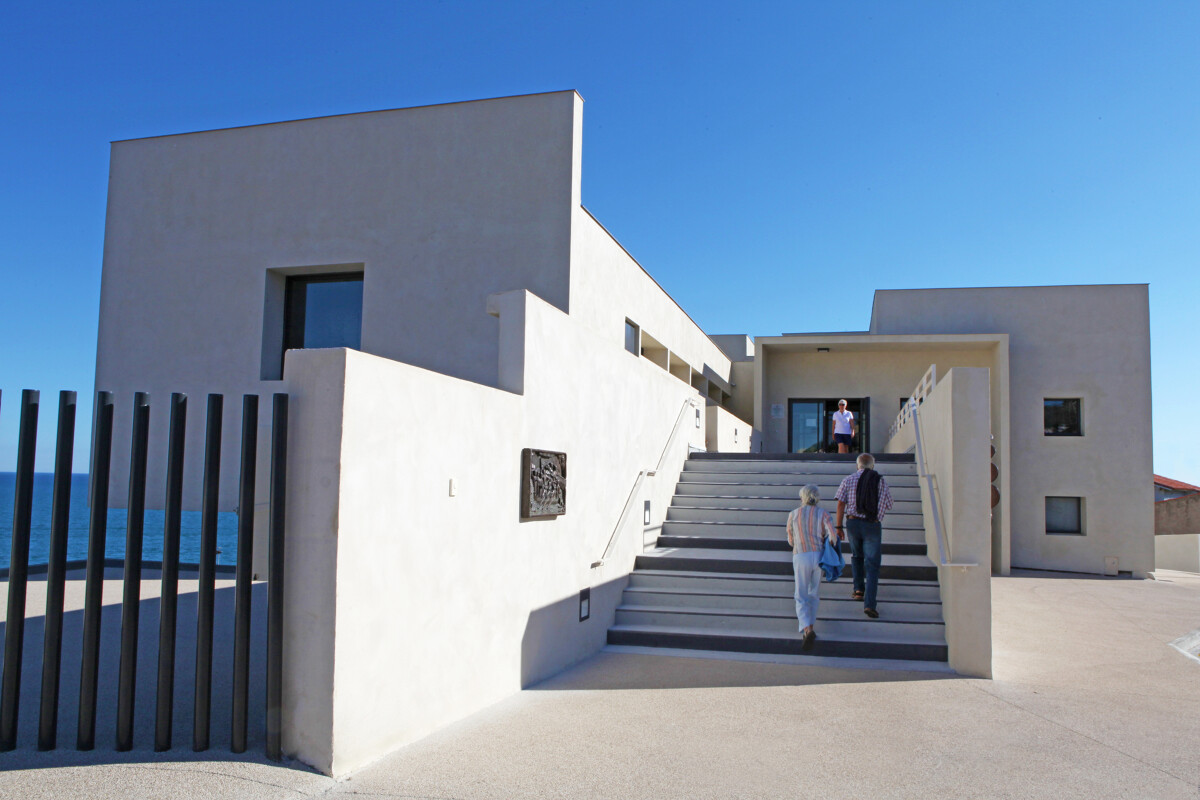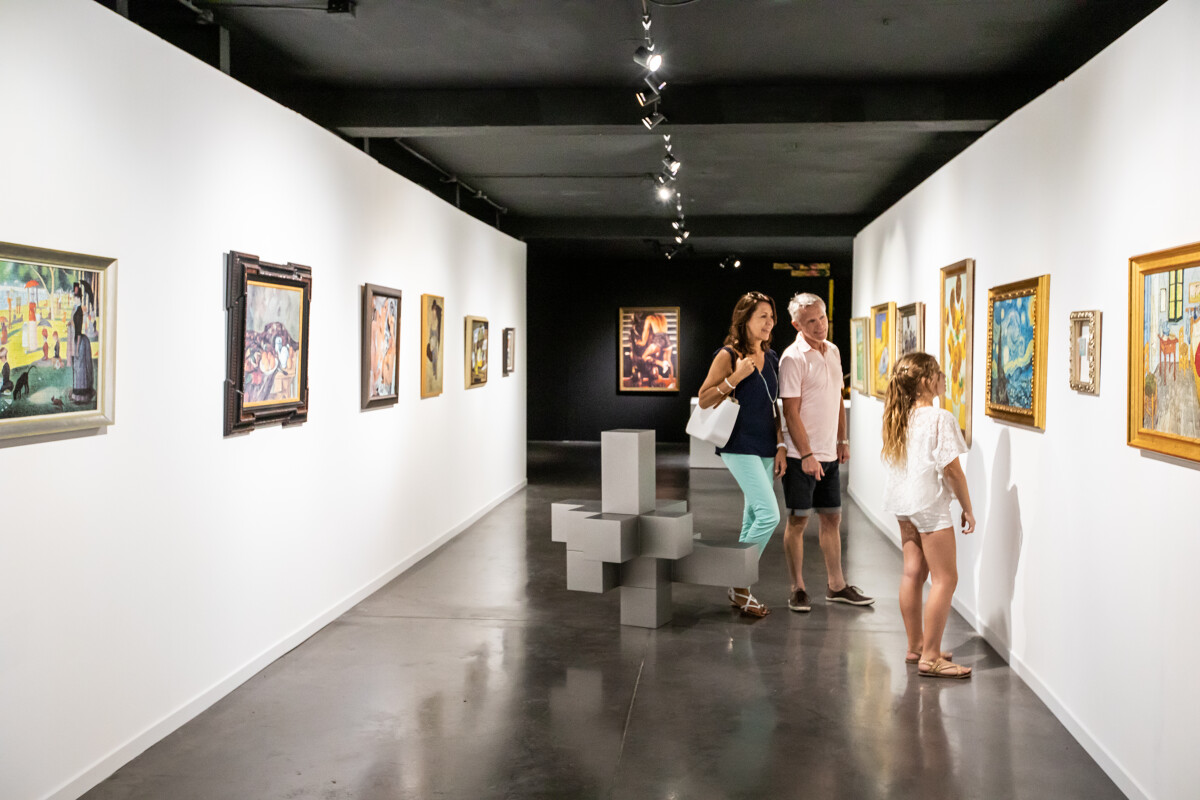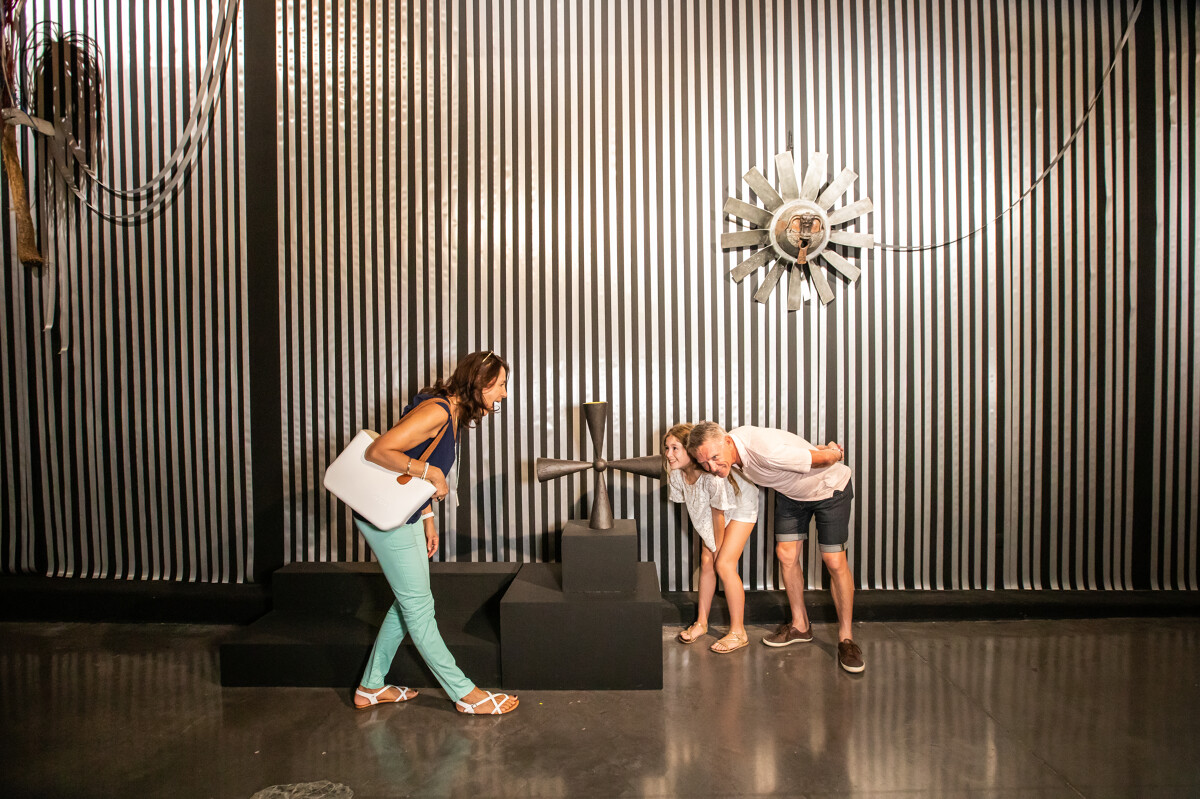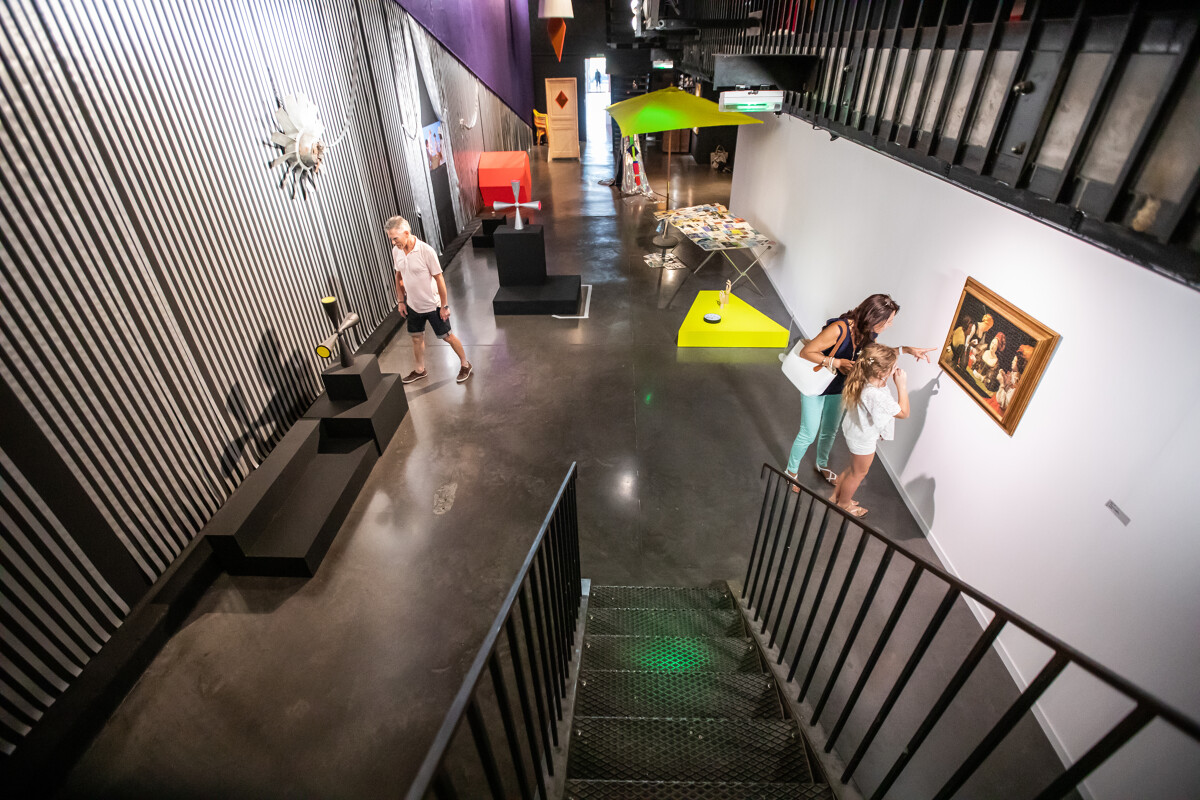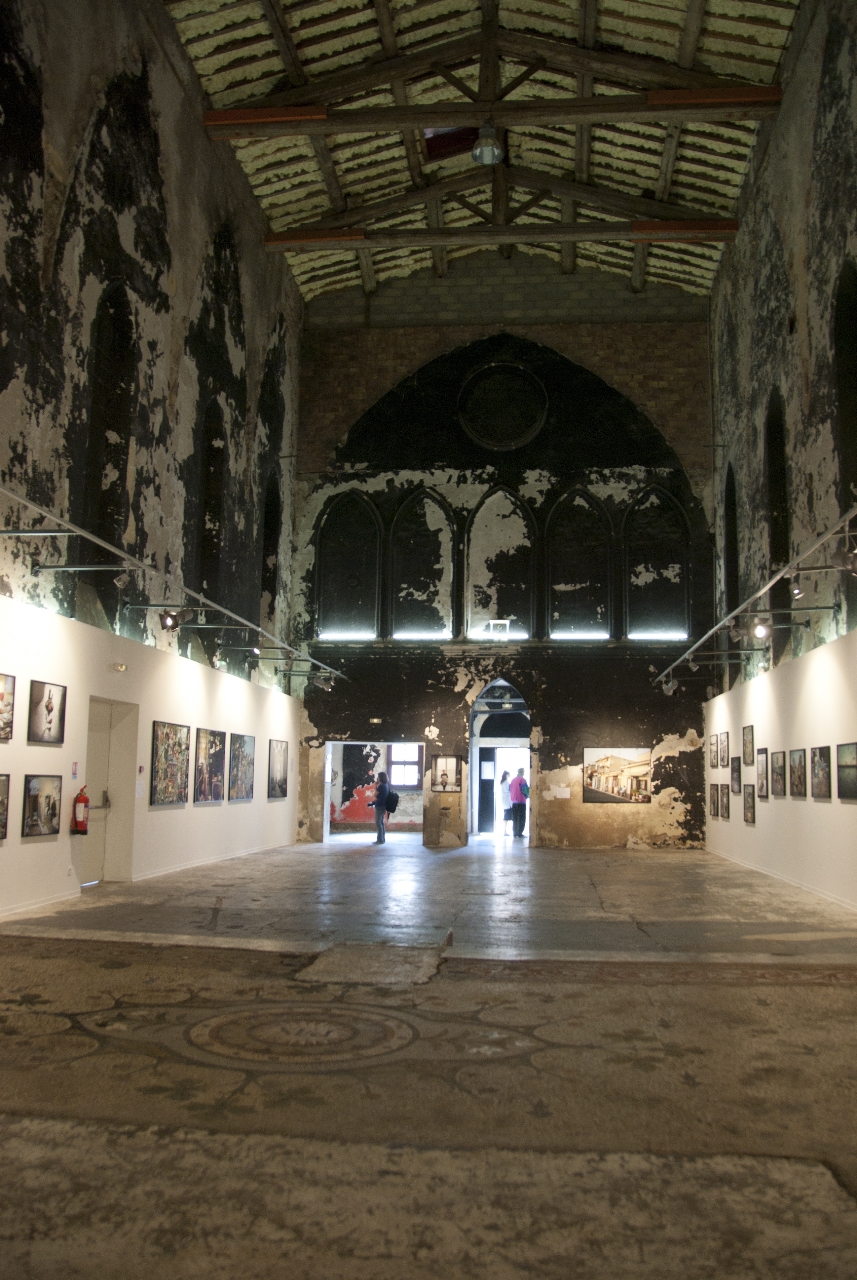Cultural interlude in the museums of Sète
Presentation
Take a leap into the history of Sète... Immerse yourself in the intimacy of the poet Georges Brassens and the writer Paul Valéry... Or take a journey through modest and contemporary art... These are just some of the experiences you can have in Sète. Let us tell you a little more about the five museums you'll be visiting.
The Georges Brassens space
In addition to its jousts and its Mont Saint-Clair, Sète also attracts attention thanks to the famous singer-songwriter Georges Brassens. And what better way to discover the works of this great singer than in the museum dedicated to him.
So whether you are a music lover or simply curious, go along Boulevard Camille Blanc, at number 67, to experience a multi-sensory journey. Equipped with headphones, set off on a journey through the life of the poet over 800 m² and through 10 thematic rooms.
Tip: You can extend your encounter with Georges Brassens in the Le Py cemetery, which faces this unusual museum. It is there that you will find his grave, but also that of his parents and his beloved.
The Paul Valéry Museum
If you wish to meet one of the other great figures of Sète, this time we suggest you follow in the footsteps of the writer Paul Valéry in the eponymous museum.
On the slopes of Mont Saint-Clair, rue François Desnoyer, push open the doors of this concrete and glass building and immerse yourself in the world of fine arts, popular traditions and the artist via no less than 4000 works. You should also know that the Paul Valéry Museum regularly hosts large temporary exhibitions featuring internationally renowned artists such as Robert Combas, Raoul Dufy, Edouard Manet, etc.
The visit will continue in the surrounding gardens where events are regularly held in connection with the museum's collections or the city's highlights (conferences, literary meetings, singing and poetry evenings, etc.).
Don't hesitate to look up to see the impressive panorama facing you, with the marine cemetery, the breakwater, the entrance to the port of Sète and the Mediterranean Sea in the background.
Tip: Fancy a gourmet break? The Paul Valéry Museum also offers you the chance to tantalise your taste buds in its restaurant with terrace called "Midi là-haut".
The Museum of the Sea
If this foretaste of Sète's history has made you want to know more, we invite you to go to the Musée de la Mer. As its name suggests, it offers a beautiful introduction to Sète's maritime past from the outside, as it overlooks the Mediterranean.
Inside, get ready to take a leap back in time to the 18th century and to take to the sea with André Aversa's important collection of model ships: gondolas, catalanes, oxboats, barquettes, trawlers...
The excursion will end in the Cadre Royal with the discovery of one of the greatest traditions of Sète: the nautical jousts! You will learn more about the heroes behind the event, their trophy and, more generally, about the Saint Louis festival which sets the pace for the life of the people of Sète every year at the end of August, for six days!
The Musée International des Arts Modestes (MIAM)
When you venture into this former wine storehouse, refurbished by the artists Hervé Di Rosa and Bernard Belluc, you won't know where to turn as the MIAM presents both modest art and art brut and continues to question the boundaries of contemporary art through its temporary exhibitions.
You will even have the opportunity to fall back into childhood since the building houses a collection of everyday objects on the second floor, including toys, figurines, gadgets and knick-knacks, all in the context of the archaeology of childhood.
The chapel of the Quartier Haut
What could be better than ending your discovery of the museums of Sète with a chapel? No, no, you are not dreaming! The chapel of the Quartier Haut has the particularity of having been refurbished to host contemporary art exhibitions, after its desacralisation at the beginning of the 20th century.
Throughout the year, you can visit this former convent of the nuns of Saint-Maur in the upper district of Sète while admiring the works of local artists.
Tip: If the artist is present on the day of your visit, don't hesitate to ask for some explanations for a personalised visit. Guided tours led by the artist are regularly offered.




